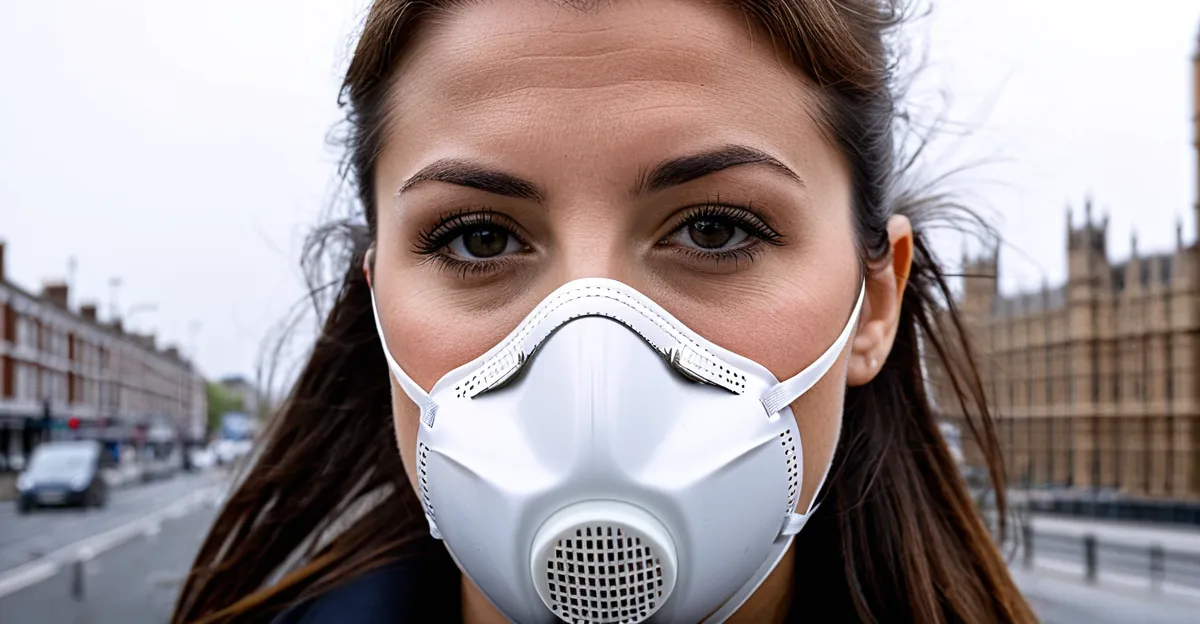Overview of Air Pollution and Health in the UK
Air pollution in the UK primarily stems from road traffic emissions, industrial processes, and residential heating. These sources emit various pollutants, including nitrogen dioxide (NO2) and particulate matter (PM2.5 and PM10), which remain the focus of regulatory concern due to their persistence and harmful health effects. Urban areas, especially London and major cities, experience elevated pollutant concentrations compared to rural regions.
Recent UK health statistics highlight the gravity of this issue. Annual air pollution levels often exceed World Health Organization guidelines, leading to significant public health challenges. For example, the UK faces thousands of premature deaths yearly attributed to poor air quality, underscoring the magnitude of the effects of air pollution on cardiovascular and respiratory health.
Also read : How Has the UK Healthcare System Adjusted to Patients’ Evolving Needs?
Understanding why air pollution in the UK is a critical health concern involves recognizing its widespread impact. Pollutants contribute to increased hospital admissions and exacerbate chronic diseases, placing a significant burden on the healthcare system. This connection makes air quality improvements urgent for protecting public health and reducing strain on NHS services.
Immediate Health Effects Linked to Air Pollution
Short-term air pollution health effects in the UK primarily impact respiratory and cardiovascular systems. Exposure to elevated levels of pollutants like nitrogen dioxide and particulate matter can trigger or worsen respiratory symptoms such as coughing, wheezing, and shortness of breath. These immediate effects often result in increased visits to healthcare providers and emergency departments.
Also to discover : The Benefits of Regular Walking for Mental Health in the UK
Research consistently shows that air pollution aggravates conditions like asthma attacks and bronchitis, leading to higher emergency admissions UK wide. For example, during pollution spikes in urban centers, hospital records demonstrate a clear rise in respiratory distress cases. Moreover, short-term cardiovascular risks linked to air pollution include increased incidence of heart attacks and strokes, especially among vulnerable individuals with pre-existing conditions.
NHS data and case studies highlight acute health incidents during periods of poor air quality, showing correlations between pollution peaks and a surge in hospitalisations. These findings emphasize the urgent need to monitor and manage air quality to reduce acute health burdens. Understanding these air pollution health effects not only clarifies immediate health risks but also informs public health strategies aimed at reducing hospital admissions and protecting at-risk populations across the UK.
Long-Term Health Impacts from Air Pollution Exposure
Long-term air pollution effects in the UK contribute significantly to the development and worsening of chronic diseases. Prolonged exposure to pollutants such as particulate matter (PM2.5) and nitrogen dioxide (NO2) is strongly linked with increased incidence and severity of respiratory conditions like asthma and chronic obstructive pulmonary disease (COPD). Moreover, these pollutants also exacerbate cardiovascular diseases, affecting heart function over time.
UK health statistics reveal that sustained exposure to poor air quality elevates the risk of premature mortality, particularly from heart and lung diseases. Recent cohort studies conducted in the UK have demonstrated clear associations between long-term air pollution and increased death rates, even at pollution levels below current national limits. These findings are supported by authoritative bodies such as Public Health England and the NHS, emphasizing the burden of long-term air pollution on public health.
The effects of air pollution extend beyond immediate symptoms, contributing to chronic health impairments that reduce quality of life and increase healthcare costs. Understanding these long-term air pollution effects is critical for shaping effective policies and interventions aimed at reducing chronic disease prevalence and mortality linked to environmental factors in the UK.
Most Affected Groups and Regional Variations
Understanding which populations bear the brunt of air pollution health effects in the UK is crucial for targeted intervention. Children and elderly air pollution exposure frames a significant portion of vulnerability. Children’s developing lungs are more susceptible to damage from pollutants like nitrogen dioxide and particulate matter, leading to increased asthma rates and respiratory infections. Similarly, the elderly face heightened risks due to pre-existing conditions, such as cardiovascular and lung diseases, exacerbated by poor air quality.
Regional disparities also shape the overall air pollution UK burden. Urban areas, notably London and other large cities, experience higher pollutant levels from traffic and industrial sources, resulting in greater adverse health outcomes compared to rural regions. This urban-rural divide means that residents in metropolitan zones face more frequent and severe emergency admissions UK wide linked to pollution peaks.
Socioeconomic factors further influence exposure and health impacts. Lower-income communities often reside in areas with elevated pollution, compounding risks related to limited healthcare access and pre-existing vulnerabilities. This combination of age, location, and socioeconomic status informs UK policies striving to mitigate disproportionate health effects on vulnerable groups and reduce inequality in pollution exposure.
Primary Pollutants and Their Health Consequences
Air pollution UK mainly involves several primary pollutants with direct health implications. Among these, particulate matter (PM2.5 and PM10) and nitrogen dioxide (NO2) are the most prevalent and concerning. PM2.5 consists of tiny particles small enough to penetrate deep into the lungs and bloodstream, triggering inflammation and exacerbating respiratory and cardiovascular conditions. Similarly, NO2, primarily emitted from vehicle exhaust and industrial emissions, irritates airways and reduces lung function, increasing susceptibility to infections.
Ozone, although a secondary pollutant formed through chemical reactions in sunlight, also contributes notably to respiratory problems in the UK, especially during warm months when concentrations peak. These pollutants interact complexly, often amplifying the effects of air pollution on vulnerable populations, such as children and those with pre-existing health conditions.
Current UK health statistics show that despite regulatory efforts, levels of PM2.5 and NO2 frequently exceed safe thresholds recommended by the World Health Organization. Monitoring data reveals slow improvements in some areas but persistent high concentrations in urban zones, demanding ongoing policy attention. Understanding the specific health impacts of these key air pollutants UK is essential for designing targeted interventions and protecting public health from their proven harms.







